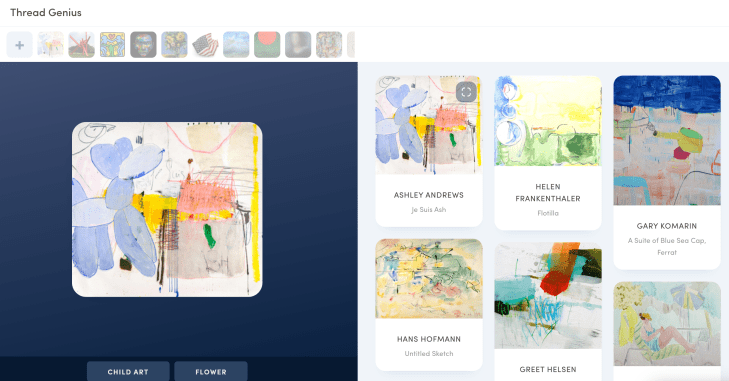Every company today is a tech company, a maxim that was proven out today when one of the world’s oldest and biggest art auction houses acquired an AI startup. Sotheby’s has bought Thread Genius, which has built a set of algorithms that can both instantly identify objects and then recommend images of similar objects to the viewer.
You can see some examples of how it works here:
Sotheby’s’ said it is not disclosing the value of the deal but said it was non-material to the company. Thread Genius was a relatively young company, founded in 2015 and making a debut last year as part of TechStars New York’s Winter 2017 cohort. Co-founders Andrew Shum and Ahmad Qamar, who were also Thread Genius’s only two employees, were both engineering alums from Spotify. They are joining the auction house along with Richard Vibert, another data scientist it has hired.
The three will become part of a new unit that will be building a new AI-based recommendation engine for the company, working in part with IP Sotheby’s owns called the Mei Moses Art Indices, an art database of 50,000 images that it acquired in 2016.
“The acquisition of Thread Genius and the addition of Richard, Ahmad and Andrew to the Sotheby’s team advance a number of initiatives related to the strategic capture and use of data to improve internal processes and provide a wider range of services to clients,” said Jennifer Deason, Sotheby’s Head of Strategy & Corporate Development, in a statement. “We have united all of our data-related activities under one umbrella, which will accelerate innovation and provide benefits to both our internal team and our clients.”
This is a pretty bold move for Sotheby’s.
Similar to other auction houses like Christie’s, Sotheby’s is not a stranger to the tech world. The company has been trying for close to 20 years to build out new frontiers and expand its business using the internet to expand its pool of would-be art buyers and consigners working with the likes of eBay and others to build out these services, these days adding in services like streamed auctions.
But one area that has remained relatively untouched by tech is the art evaluation aspect of the business.
Traditionally, auction houses have relied on an army of art connoisseurs — specialists who are able to identify artists, craftspeople, schools of work and often much smaller, more subtle details to help determine the provenance and value of a work — not only to help source objects, but to help find the right buyers to bid on and eventually buy the work.
While I don’t think that Sotheby’s is going to quickly give up on its human specialists, what it will mean is that the auction house now will be able to replicate some aspects of their work to help expand on to digital platforms, and to touch more potential buyers and others as a result.
The fact that the Thread Genius team will be building an AI-based recommendation platform touches on an interesting trend in the non-tech world: companies whose core competency is not technology are increasingly looking to tech to replicate some of the expertise that they have in house to expand what they can do.
(This is, apparently, also the case at Amnesty International, which is currently trying to build an AI-based system to help monitor activities around the world, essentially putting in place AI systems to do the work of an army of specialists that it doesn’t have the resources to employ.)
“Historically, transactions would come together by matching an object with an individual’s preference at a certain price point, and Sotheby’s retains data in those three areas,” said Tad Smith, Sotheby’s CEO, in a statement. “By using advanced technology, we can deliver better insights and match those three elements faster, providing our staff with better tools, our clients with a better experience, and our consignors with even better results. We are committed to attracting and retaining talent in all aspects of what we do and are thrilled to welcome Richard, Ahmad and Andrew to Sotheby’s.”
We’ve seen a number of other moves leveraging tech to improve both art buying and the art experience. And they are popular: On a recent visit I made to the Tate here in London for a Modigliani exhibition, it was impossible to get in to see a VR experience of Modigliani’s studio; it had been booked up for the whole day. Meanwhile, marketplaces like Artsy (which also has a visual database of sorts, the Art Genome project) are growing fast.
